Not far from the Forbidden City, the Mandarin Oriental Wangfujing interior was conceptualised by HBA as a modern-day courtyard mansion.
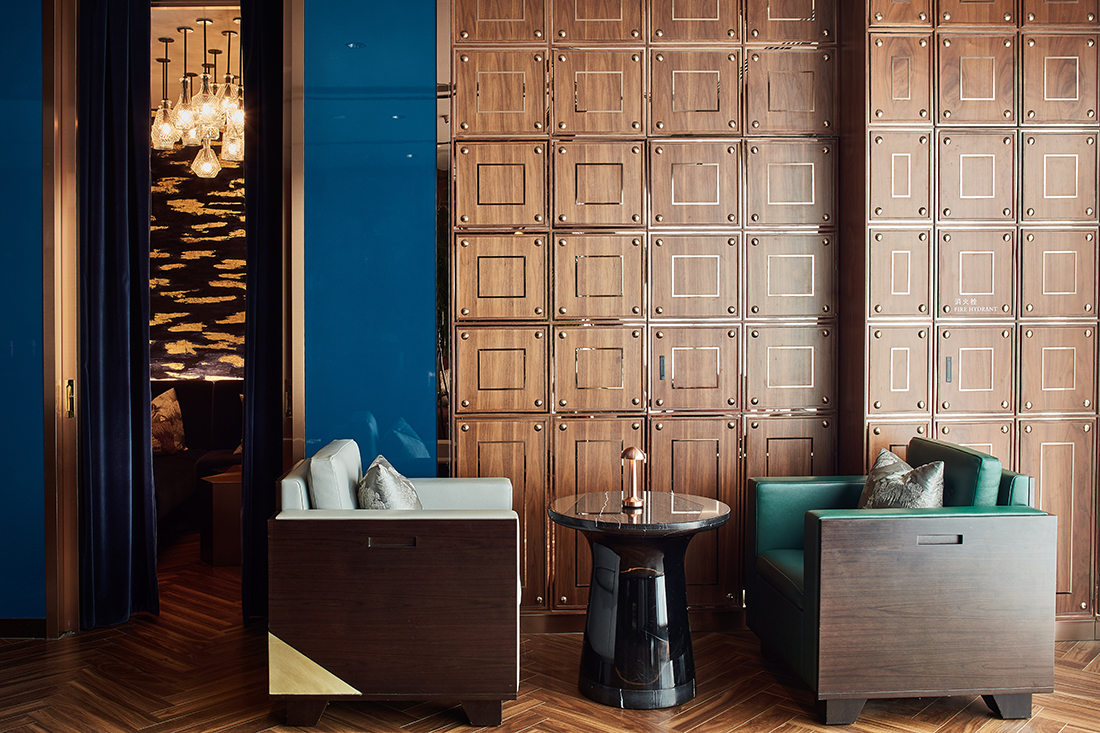
MO Bar on level 5
November 29th, 2019
Not far from one of the world’s most famous Chinese residences, the Forbidden City, the Mandarin Oriental Wangfujing conveys and modernises the opulence of Qing Dynasty aristocratic residences.
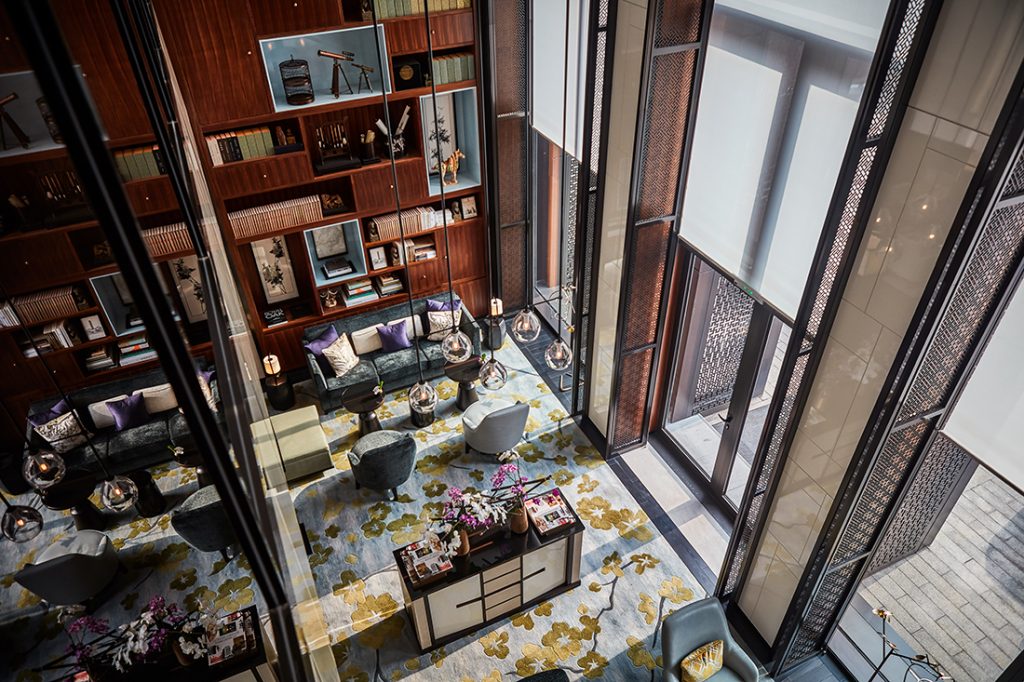
The Library on level 5
Hirsch Bender Associates (HBA) have designed the interiors of the 73-room hotel with courtyards, columns, gardens, water features, embroidery and lacquerware in keeping with the historic location but with a contemporary twist. “We aimed at investigating and reviving the spatial qualities of the traditional Chinese courtyard house, re-proposing the unique relationship between outdoors and indoors and the protective introversion of these extraordinary architectural typologies,” say the designers.
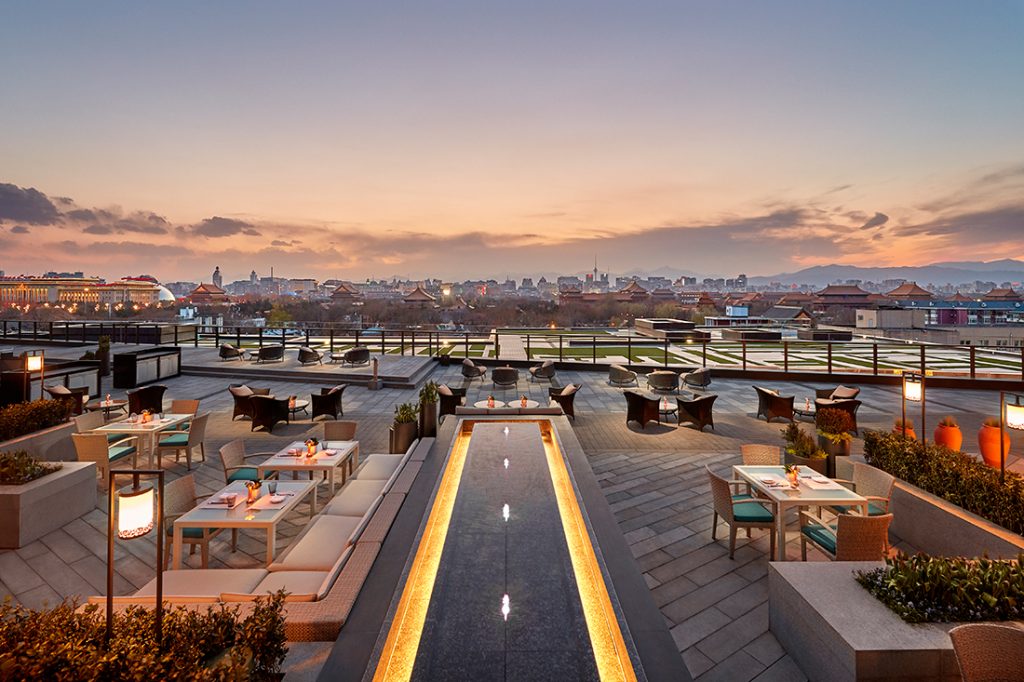
Photo by George Apostolidis for Mandarin Oriental
Throughout the hotel, walls and floors of heavy stone and windows looking out onto pockets of tranquil gardens bring the outside in. Columns, archways, doorways and windows are framed in traditional Chinese style with dark timber and metal, setting the hotel apart from the neighbourhood of modern buildings and fancy shopping malls.
The designers chose chrysanthemum floral details featured in laser-cut screens and ceramic tiles as well as striking traditional Chinese lanterns to bring splashes of colour and intricate detail.
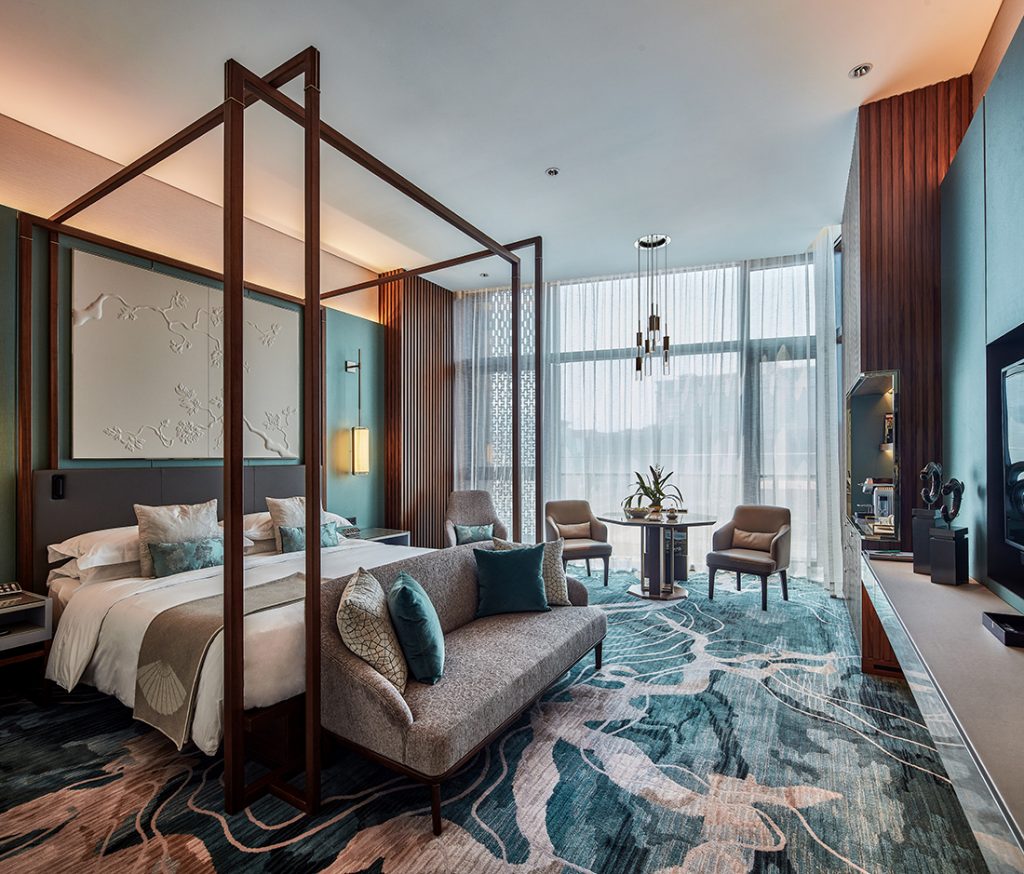
Premier Room
“Each feature is linked to the past and the tradition, but reinterpreted in a contemporary language: details that recall the Chinese tradition and heritage, archetypal pieces of furniture, embroidery and wall coverings picking on traditional motives and a carefully curated selection of art and accessories,” say the designers.
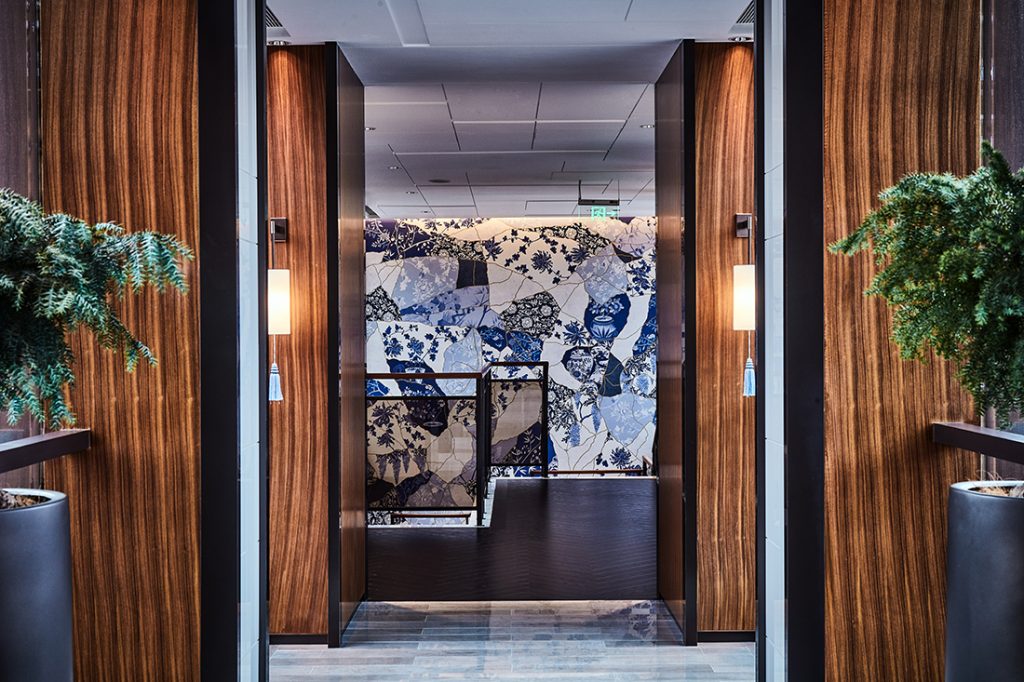
Corridor on level 6
Guests enter the hotel into a bright sky-lit courtyard-inspired space with dark stone, softly lit lampshades and a central water feature in homage to the area, Wangfujin, which literally means ‘prince’s mansion well’.
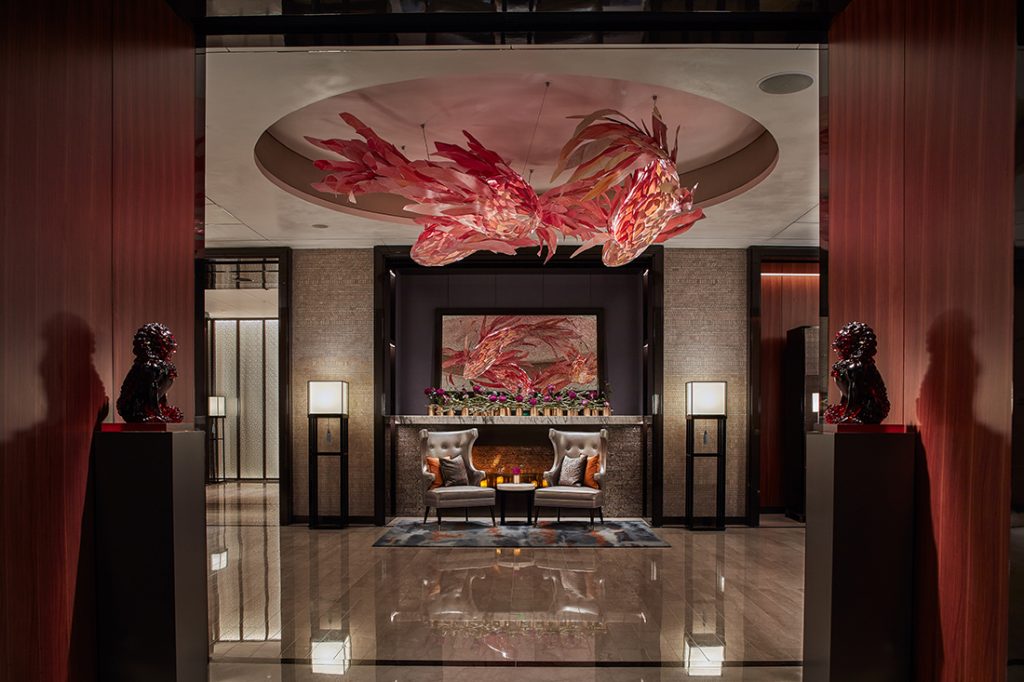
Lobby
Onwards to the lobby. There, embroidered cobalt and gold panels, timber walls, dark lacquered shelves and earthy rugs mimic the reception rooms of old aristocratic mansions. Above, a stunning red installation of three dancing fish by Frank Gehry hangs to create a dramatic modern focal point countering the more traditional elements.
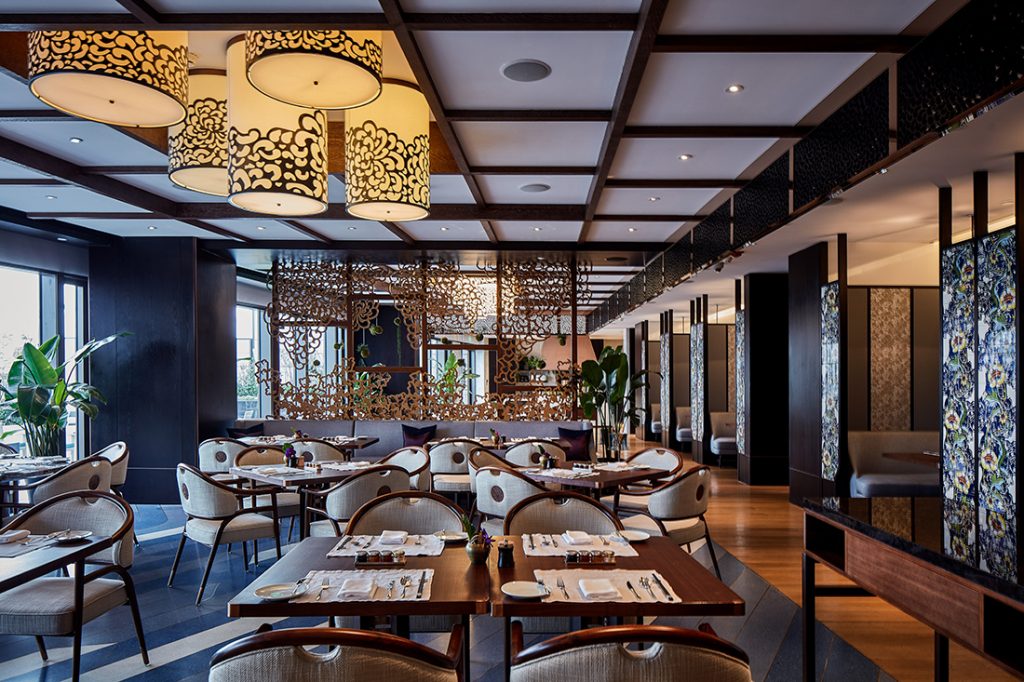
Cafe Zi on level 5
For the hotel’s bright and airy all-day dining restaurant, the designers took inspiration from a Chinese garden blossoming in the morning sun. Traditional floral patterns are cut into panels dividing dining areas while maintaining openness. The patterns also feature on ceramic tiles framed in dark timber to create more private dining areas.
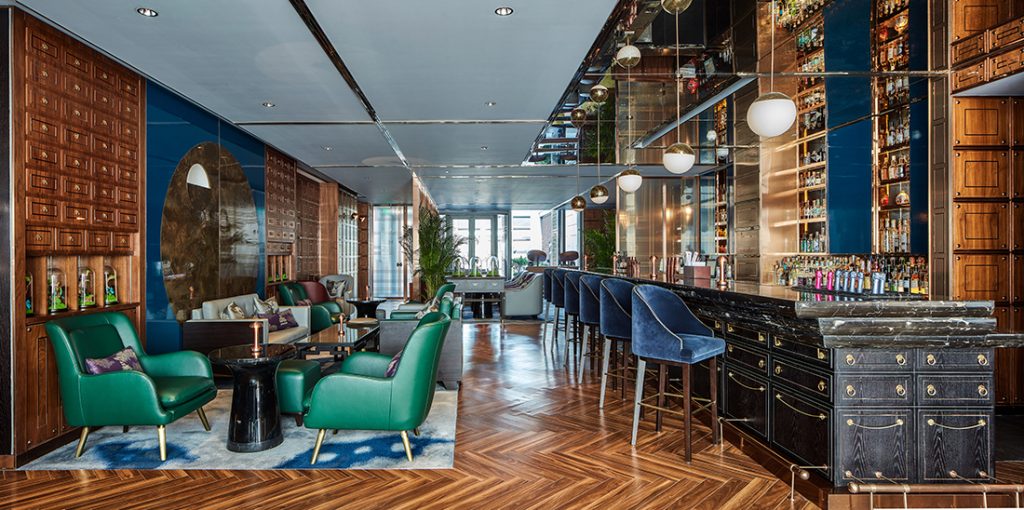
MO Bar on level 5
Adjacent is MO Bar – a sumptuous space with cabinets in dark wood and leather-panelled chests of drawers evoking old Chinese apothecary shops.
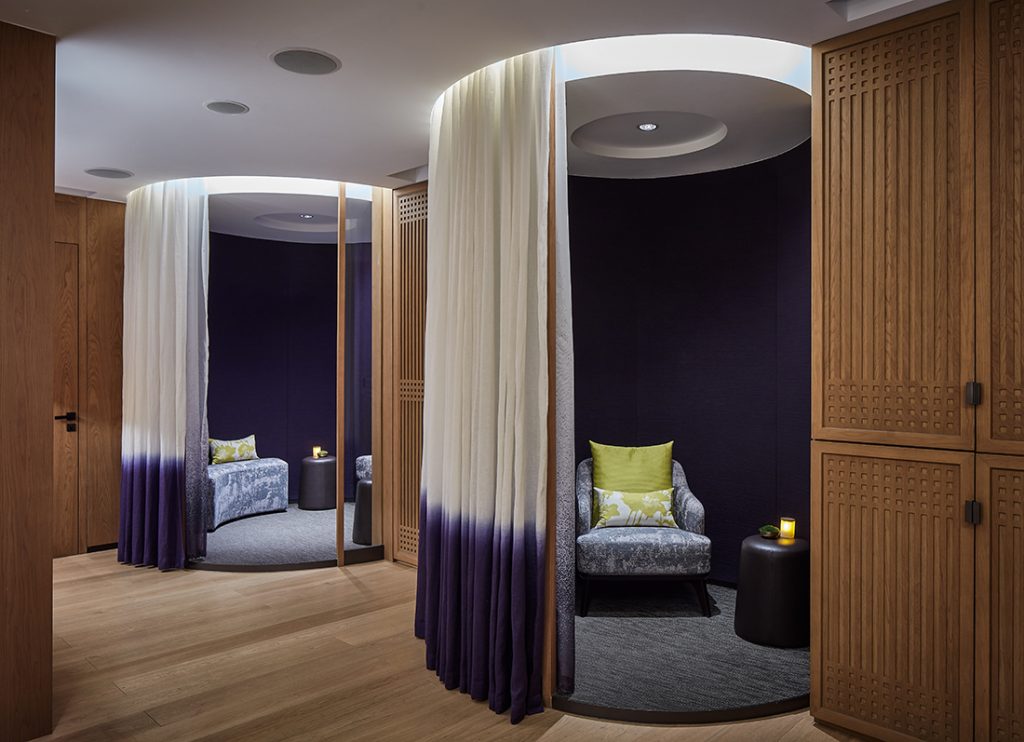
Spa relaxation and reception area on level 6
From the restaurants, a stairwell of warm glowing linear steps enclosed in a ‘lantern’ create an intimate pathway to the guest rooms, where the design centres on huge four-poster beds with headboards of flora and fauna in marble.
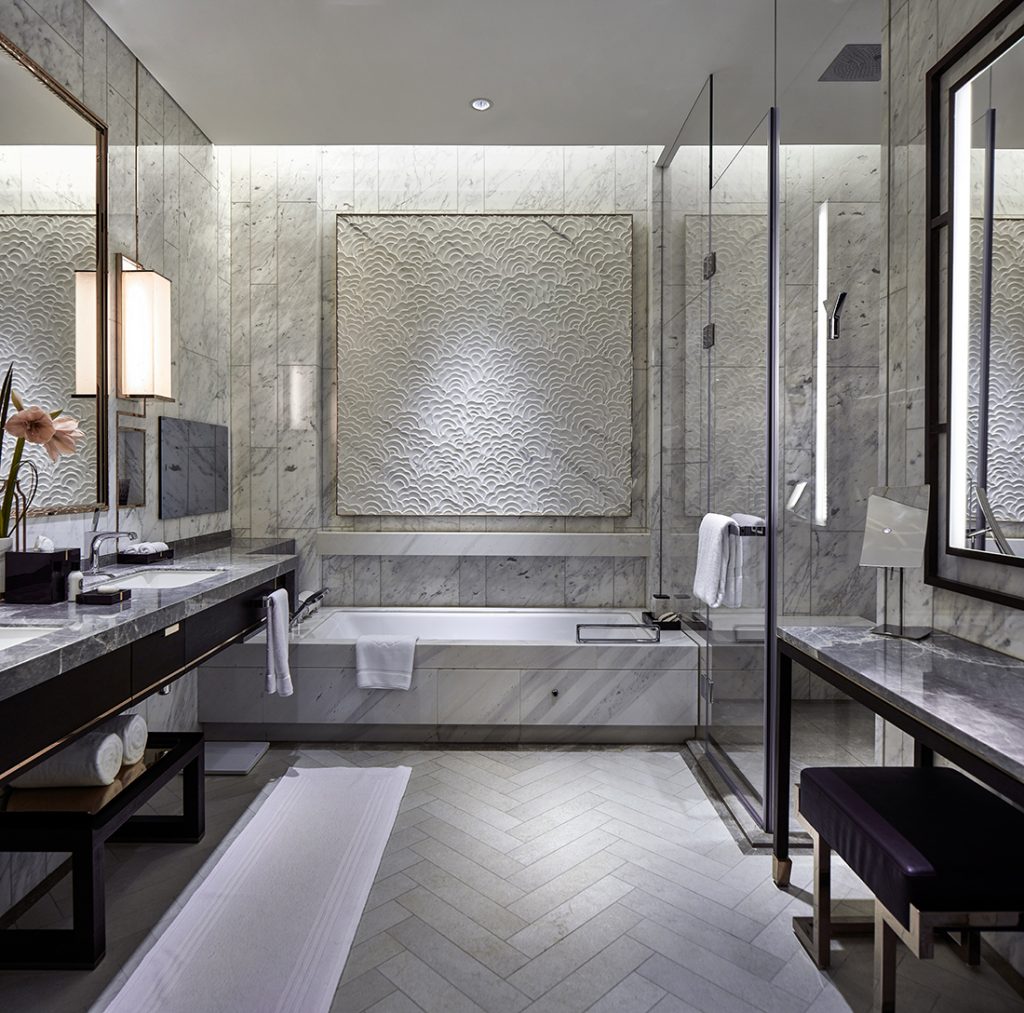
Premier Room, bathroom
A searchable and comprehensive guide for specifying leading products and their suppliers
Keep up to date with the latest and greatest from our industry BFF's!

Create a configuration to suit your needs with this curved collection.

The Sub-Zero Wolf showrooms in Sydney and Melbourne provide a creative experience unlike any other. Now showcasing all-new product ranges, the showrooms present a unique perspective on the future of kitchens, homes and lifestyles.

In the pursuit of an uplifting synergy between the inner world and the surrounding environment, internationally acclaimed Interior Architect and Designer Lorena Gaxiola transform the vibration of the auspicious number ‘8’ into mesmerising artistry alongside the Feltex design team, brought to you by GH Commercial.

Marylou Cafaro’s first trendjournal sparked a powerful, decades-long movement in joinery designs and finishes which eventually saw Australian design develop its independence and characteristic style. Now, polytec offers all-new insights into the future of Australian design.

A hair salon in the Japanese capital blends a language of metal and water in a distinctive, original design.

A hospitality venue in the heart of Osaka comprising four dining options – a place where nostalgic pastimes meet high-end dining.
The internet never sleeps! Here's the stuff you might have missed

Savage Design’s approach to understanding the relationship between design concepts and user experience, particularly with metalwork, transcends traditional boundaries, blending timeless craftsmanship with digital innovation to create enduring elegance in objects, furnishings, and door furniture.

Leading the field in terms of ergonomics, this high-end office furniture from Buro is also designed with the evolving needs of the modern workplace in mind.